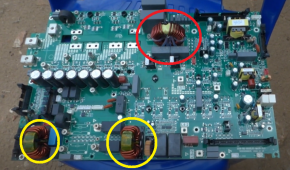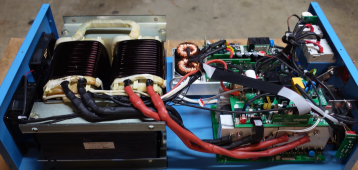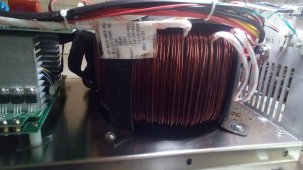Some inverters use toroid inverters. The Sunny Islands and transformer type Sunny Boys I use have 60 Hz toroid transformers, which allows a bit higher efficiency than other type transformers.
High frequency inverters, including transformerless Sunny Boys, often use high frequency toroid inductors or transformers. (Like Deye pictures a couple posts above)
My measurements of transformer inductance, saturation, inrush indicate that despite being 50 or 150 lbs, the transformer stores extremely little energy, less than one 60 Hz AC current at full load. Applying full line voltage with no load, current rises to about 1/100th or less of rated current in the 8 milliseconds of 1/2 cycle. Applied for two half cycles, 16 milliseconds or one half cycle of 30 Hz, current gets twice that high then shoots up due to saturation - core can't store any more energy and current is limited by wire resistance not inductance.
I think surge current of low-frequency inverters is more about other design considerations, less about the big transformer and flywheel effect. Surge capability of HF inverter is probably limited by max current of its boost converter. That could be sized 2x or 3x if desired, based on its saturation current. Heat handling is something that could be pushed for surge, but not saturation.
A transformer can handle high current in primary without saturating because high current opposite direction in secondary cancels magnetic field.
An inductor for boost converter has to store energy for each high frequency cycle with its inductance. I think that is the limit. But, design could switch it at twice the frequency to deliver twice the power (until things overheat.) So I would guess surge capability is more a firmware choice.








